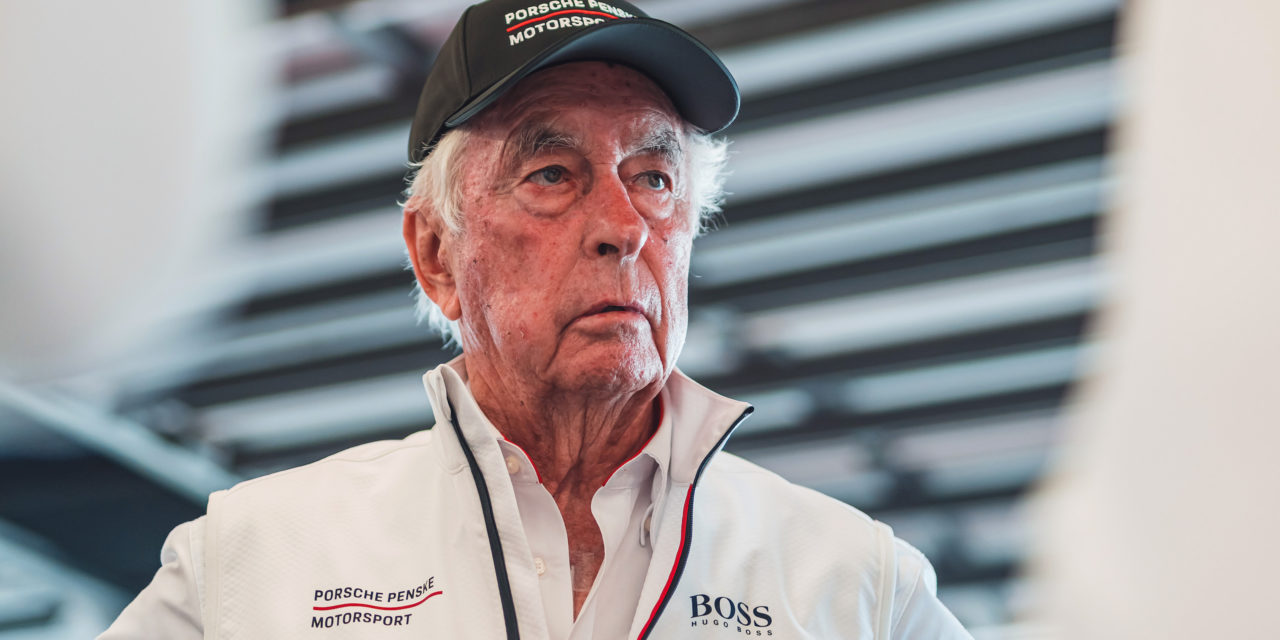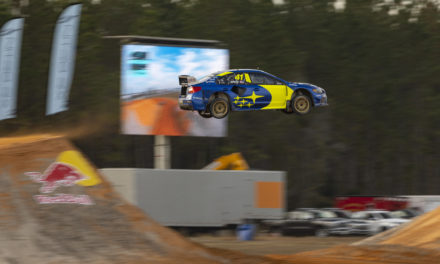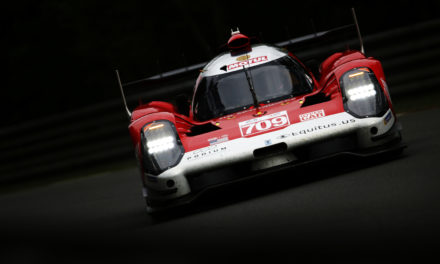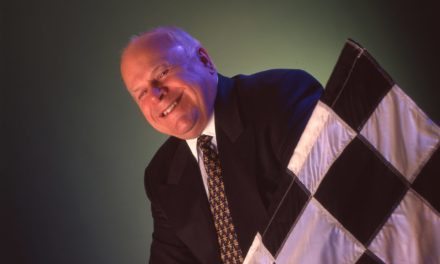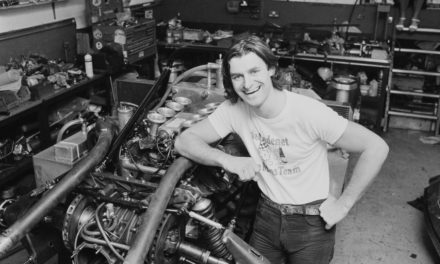So how’s the car business? Roger Penske pulls out his phone. He can evaluate how all his dealerships (more than 150 in the U.S. alone) are doing, and how each of his brands (more than 30) is performing, with numbers as recent as, well, right now.
“We’re selling every single thing we have. Most dealerships have a half-dozen or a dozen cars in stock.” Supply-chain issues, chip shortages, COVID—one thing after another.
He scrolls through his holdings. “We’re better now than we were,” he says, almost to himself. “Up 75 percent on Ferrari, we sell almost 600 new Ferraris a year. Audi’s up for the month, down 22 percent for the year. BMW’s double-digit up. Honda’s doing better …”
He looks up with a sheepish grin. “I’ve been married for 39 years, and all the time my wife has tried to take the phone away from me. Ain’t happening!”
Penske is head of Penske Automotive Group, headquartered in Bloomfield Hills, Michigan. To say he is hands-on with his businesses—and there are many others, not all of them new-car-related—is an understatement.
Same thing with his race teams: He owns the IndyCar series and the Indianapolis Motor Speedway. He owns an IndyCar team that, last weekend, took the season championship. He owns a three-car NASCAR team that has twice won the championship, plus multiple teams overseas. His cars have won the Daytona 500, the Rolex 24 at Daytona, and the Indianapolis 500.
Penske has won just about everything but the 24 Hours of Le Mans, which is why we’re here today, at the Daytona International Speedway for the first Daytona test of the Team Penske Porsche 963, which will debut—along with brand-new prototype cars from Acura, BMW and Cadillac—at the Rolex 24 at Daytona in January 2023.
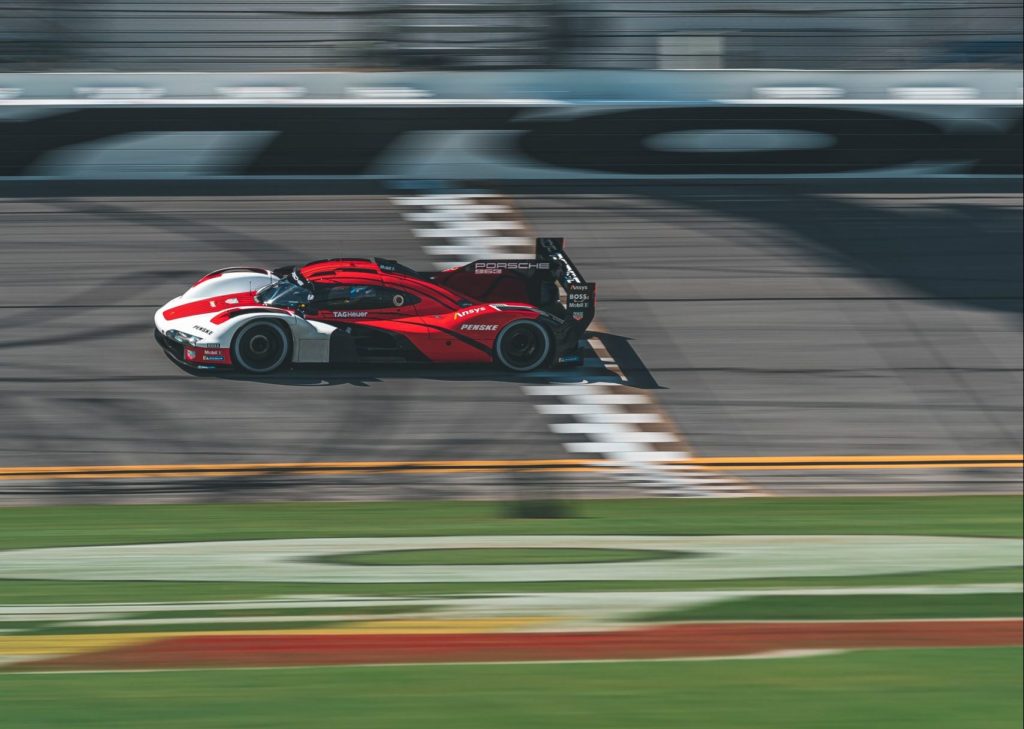
Porsche
These new cars are called GTP racers in U.S. competition and Hypercars in European series. Next May, they’ll all be racing against each other, for the first time, competing for the overall victory at Le Mans. It’s a box that Penske, now 85 years old, desperately wants to check. And this test at Daytona is his first real look at the cars and drivers he hopes will do it.
Penske sat down for a rare, wide-ranging interview. Here are some excerpts:
On attending his first test at Daytona of his new Porsche 963 race car: “It’s a big day for me, I’ve been waiting weeks to get down here and have this test. We’ve been plagued with supply-chain issues and technical problems with one of our suppliers that have kept us somewhat grounded, but the team has done a great job. We’re building a team not only here in the U.S. but over in Mannheim, Germany, for the World Endurance Championship. On top of that we’re finishing our building in Mannheim, that’ll take another four to six weeks. Weissach, where Porsche is located, is only an hour away so it’s quite a good interface there. The support by Porsche has been terrific.”
Why he’s getting back into sports-car racing: “Sports cars is where I started personally, and when you think about the success we’ve had over the years with Porsche, it really started with me driving an RSK Spyder back in my early days, and that went on to create a relationship with Porsche. We brought them in to start the International Race of Champions where we had Formula 1 drivers, NASCAR drivers, sports car drivers from all over the world compete—Ronnie Peterson, Mario Andretti, Richard Petty, Jackie Stewart—and there was our program with the 917/10 and the 917/30, which was possibly the most powerful sports car racer ever built, and then the Spyder, which we had a lot of success with, and now we have this commitment and it’s important to show we can deliver.”
What finally winning the 24 Hours of Le Mans would mean: “When you think about our team—we’re approaching 600 wins—winning Le Mans would be like 500 of ’em. The good news is we’re not going to run 13th and win our class, we’re going for the overall win. That’s why we’re here. All Porsche wants to do is win, and that’s all we want to do, too. At GM, knowing [president] Mark Reuss, that’s what he wants to do. And the Acura guys. I think there’s a tremendous appetite for sports car racing. You can run at Daytona, and Sebring, and Indianapolis, and overseas—there’s no limit to what this can turn into. This is a partnership—Porsche-Penske. This particular program is a commitment made because of the opportunity to race around the world.”
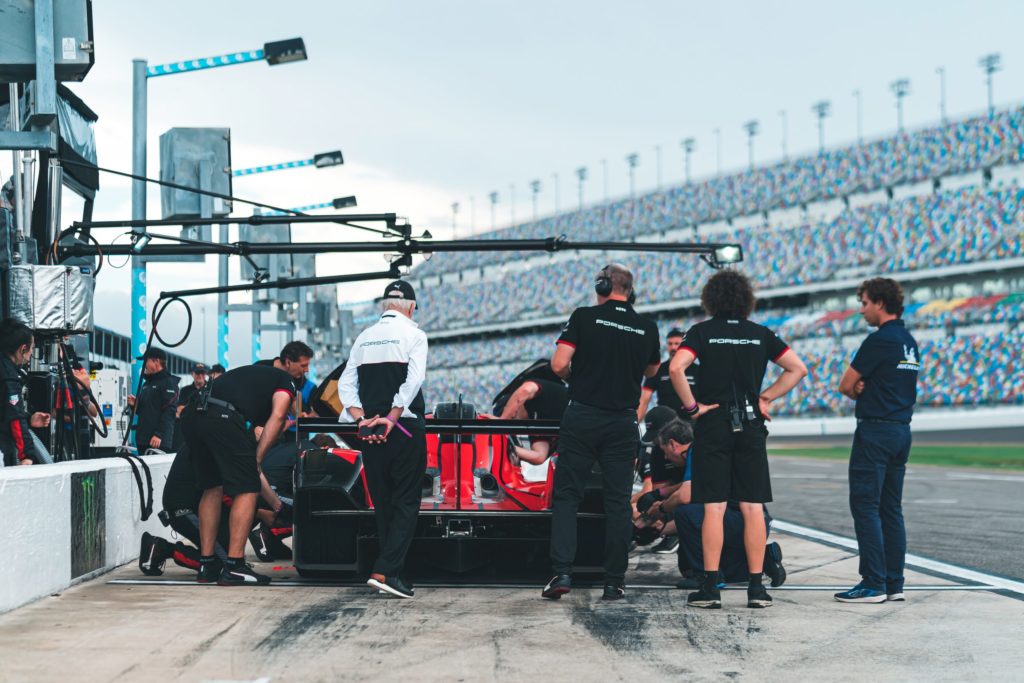
Porsche
What’s changed since Penske raced in the early 1960s: “A lot has changed. I had a station wagon and a two-wheel trailer with a Porsche on it. Today we’ve got five or six transporters and 60 people here today, just for a test. Porsche brings us such a bank of capability that we would never have as an independent team. That was one of the things that excited me about this long-term program.”
On the future of electric and hybrids in racing: “I’m not sure you’re going to see full electric anytime soon, although Formula E has made a niche for itself. In 2035, I’m not going to be around at that point, so somebody else will make the decision. But I’ll tell you one thing: I didn’t buy Indianapolis Motor Speedway to watch electric cars ride around there right now.”
That said: “We’re all-in as far as sustainability goes at the track. We took all the paper towel dispensers out and put in electric dryers. We replaced all the lights with LEDs. Put proper flushers in the bathroom, and we’re saving 700,000 gallons of water. In the old days in Indy they’d turn the water on in May and turn it off in December. Every company we have has someone in charge of sustainability.”
On NASCAR: “They are really stepping it up on diversity, and I’m not just talking about people—they are trying to change up the racing, the venues, racing at the Los Angeles Coliseum, racing on dirt, the street race in Chicago, the doubleheader with IndyCar at Indianapolis. They’ve got some great ideas. The new car this year—it’s been more expensive than we thought it would be. But going into the playoffs we had 16 drivers who won races. Think about that. It’s probably never happened. Sponsors want more for their investment, which you’d expect today, but we’ve found a good level field to attract people to come to our sport.”
On getting a new manufacturer for NASCAR: “We’re working on trying to get a new manufacturer in IndyCar, and NASCAR is working on the same thing. We’re getting some traction right now because we’re involved in electrification with the hybrid cars, but any new manufacturer has to get in with a solid team. It’s not just bringing new engines and sheetmetal, you have to find a team. It makes a huge difference.”
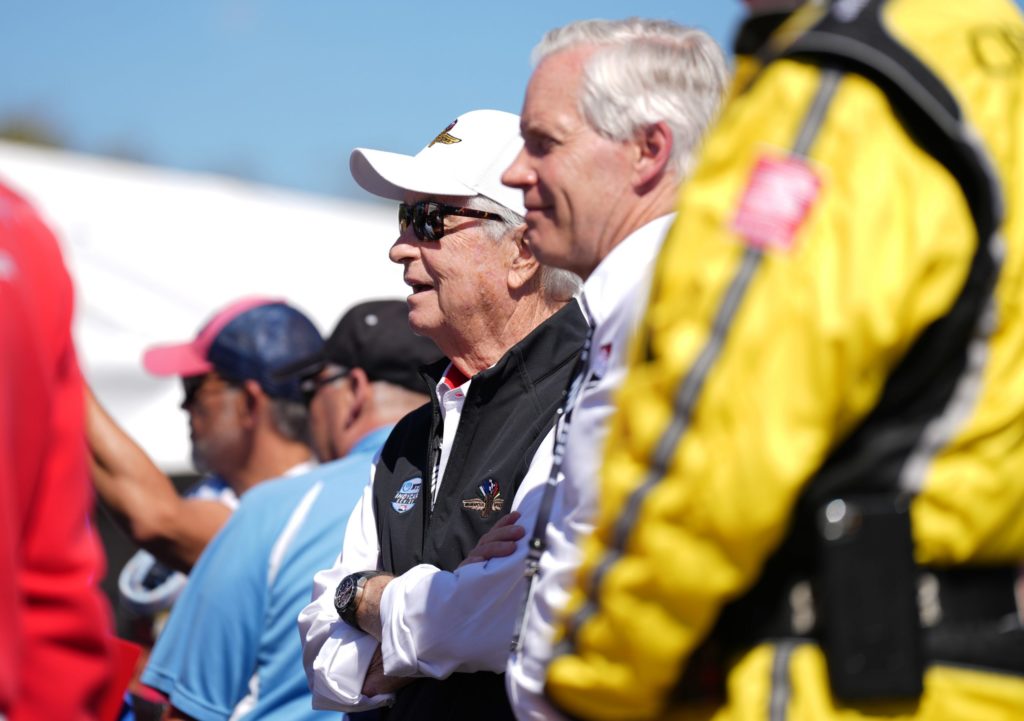
Mark Brown/Getty Images
On electric passenger cars: “The hybrid will be the transition technology for a number of years. The infrastructure isn’t ready—anywhere, really—and battery costs are still high. Today, when you look at a pure ICE engine, the emissions are pretty good. I have both—I have ICE vehicles, but I have [an electric] Porsche Taycan and a new Hummer.”
Why manufacturers race: “Racing helps sell cars. And the way it sells cars is that people are enthusiastic about racing and they want to see winners. That’s why Porsche is entered, and why the Ferrari brand is so strong. You think that if Ferrari wasn’t in racing that they’d have the credibility they do today? You come to Indy or Daytona and you have 200,000 or 300,000 people, and it’s a social event. At Indy, I call it a generational fan base because nobody wants to give up their tickets, they just pass them down.”
Finally, on marrying racing and selling cars: “From a business standpoint, we have 21 Porsche dealerships around the world, so it’s a brand we represent properly and professionally in the marketplace. We expect to use that in every race we go to, bringing our customers and Porsche’s customers to the track. That’s how each of us can justify it. Business-wise, racing has been a common thread through the companies. We have 64,000 people now in nine countries and four continents so we have folks asking every day how Team Penske is doing.”

